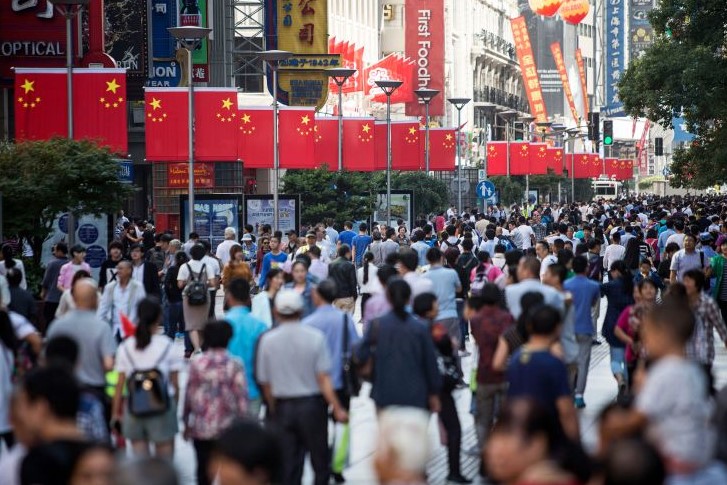
China on Monday announced that its official economic growth came in at 6.6 percent in 2018 — the slowest pace since 1990.
That announcement was highly anticipated by many around the world amid Beijing’s ongoing trade dispute with the U.S., its largest trading partner.
Economists polled by Reuters had predicted full-year GDP to come in at that pace, which was down from a revised 6.8 percent in 2017.
Fourth quarter GDP growth was 6.4 percent, matching expectations. That was a decline from the 6.5 percent year-over-year growth in the third quarter of 2018.
There were a few bright spots in Monday’s batch of official Chinese economic data.
Industrial output grew 5.7 percent in December from a year earlier — beating economists’ expectations of 5.3 percent growth — outpacing November’s 5.4 percent growth.
Retail sales data rose 8.2 percent in December on-year, in line with a forecast and up from November’s 8.1 percent gain.
“What we’re seeing in the fourth quarter is that, while the economy is decelerating, we actually still have some support from most of the quarters from the export front-loading,” said Helen Zhu, head of China equities at BlackRock, referring to exporters rushing to ship their goods out of China before new U.S. tariffs hit.
Zhu told CNBC that even though she expected some support from Chinese consumption and tax cuts, growth in 2019 will decelerate this year compared with 2018.
Although Beijing’s official GDP figures are tracked as an indicator of the health of the world’s second-largest economy, many outside experts have long expressed skepticism about the veracity of China’s reports.
“The official GDP figures have been too stable in recent years to be a good guide to China’s economic performance,” said Julian Evans-Pritchard, senior China economist at Capital Economics, a research house.
“But for what it’s worth, the headline breakdown suggests that service sector activity strengthened slightly last quarter,” he added.
Chinese statistics bureau chief Ning Jizhe told reporters on Monday that his country’s trade dispute with the U.S. has affected the domestic economy, but the impact was manageable, Reuters reported. He said China’s economy has shown a slowing but stabilizing trend in the last two months, and that it was still driven overall by domestic demand.
Even before increased trade tensions with the U.S., China was already trying to manage a slowdown in its economy.
Beijing is trying to balance a crackdown on high debt levels while also maintaining economic growth. While reducing reliance on debt would benefit the economy in the long run, it likely means a far slower pace of growth than the country has seen in recent years.
Nevertheless, economic data from China are being closely watched for signs of damage inflicted by the trade war with Washington.
While official data indicated China’s economy held up for much of last year, it now appears to be slowing. Production metrics and export orders are falling as the country’s trade dispute with the U.S. drags on and other factors weigh on growth.
Both sides have been trying to negotiate a deal.
China has offered a six-year boost in imports during its ongoing talks with the U.S., officials familiar with the matter told CNBC last week.
China pegged its proposal to buy more U.S. goods through 2024 to President Donald Trump’s hopes of being re-elected in 2020, the sources told CNBC.
China’s top trade negotiator, Vice Premier Liu He, will visit Washington, D.C., on Jan. 30 for two days of talks with U.S. trade representative Robert Lighthizer.
China to boost economy through policies
Acknowledging that China’s development faces a more complicated and difficult external environment in 2019, the country’s statistics bureau chief Ning said there is still ample ability to institute new support, Reuters reported.
Analysts are expecting Beijing to roll out further stimulus in the month ahead.
Tao Wang, UBS Investment Bank’s Asia economics head and chief China economist, said she expected Beijing to roll out further cuts to the reserve requirement ratio — the amount of cash that banks have to hold as reserves.
Together with other policy tweaks such as tax cuts and infrastructure spending, China’s growth can be stabilized so that the economy achieves a “soft landing,” Wang told CNBC. UBS forecast China’s GDP growth to be 6.1 percent in 2019.





























